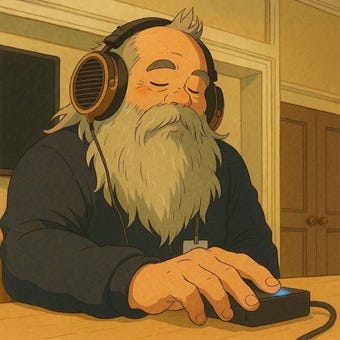What is Vibe Marketing, Anyway?
Okay, so vibe marketing is this hot new trend I’ve been seeing all over X lately, especially after Greg Isenberg’s post on March 22, 2025 it’s got over 500,000 views and counting!
It’s basically an AI-driven way to let a single marketer, using cool tools, achieve what a traditional team of 10+ people (copywriters, designers, analysts, you name it) would take weeks to do.
But now? Campaigns can launch in days, blending speed with that emotional “vibe” to connect with audiences. It’s wild to think a solo marketer could pull this off, and it’s got me super curious.
I dug into a Forbes article from March 25, 2025, “VCs Wake Up To Vibe Marketing: AI Reshaping The $250 Billion Industry”, and it’s clear this is tied to “vibe coding”; you know, where AI tools like Replit, Bolt, and Lovable let non-techies code fast, cutting dev cycles from eight weeks to two days.
Now, that same speed is hitting marketing, and I’m both excited and a little skeptical.
Why Is This Happening Now?
Three things are making vibe marketing explode right now:
AI’s Getting Smarter: AI can now handle up to 30% of marketing tasks, according to a 2023 McKinsey report. It’s creating content, analyzing competitors, and optimizing campaigns in real-time.
Tools Are Easy to Use: Platforms like Make, Zapier, and Taskade make this tech accessible even if you’re not a tech geek like me, honestly! I tried Zapier last week, and it was a game-changer for automating some of our campaigns.
Costs Are Dropping: Building custom tools is way cheaper now, so even small players can jump in. Greg Isenberg’s LinkedIn post says (predicts) a solopreneur with $500 and a laptop could take on a $50 million incumbent. That’s mind-blowing!
What’s It Look Like in Action?
Vibe marketing is all about tools and speed. I’ve seen examples like a CRM extension that finds prospects, analyzes their LinkedIn, and crafts personalized messages on its own.
Super futuristic!
There’s also Phantom Buster, which grabs competitor ads and spits out variations for your brand, or Taskade automating Instagram giveaways in hours. I even checked out a Medium article, “WTF Is ‘Vibe Marketing’”, and it talks about creating emotional resonance - joy, nostalgia, rage - to make campaigns stick, which I love because it keeps the human element alive.
But here’s the catch: it could disrupt the $250 billion marketing industry, letting small teams or solo marketers outpace big agencies.
That’s exciting but also scary; will agencies adapt, or get left behind?
The Tools Powering It
Workflow Builders: Make, n8n, Zapier
Agent Platforms: Taskade, Manus, Relay, Lindy
Marketing AI: Phantom Buster, Mosaic, Meshr, Icon, Jasper
Creative Tools: Flora, Kling, Leonardo, Manus
Vibe Coding Platforms: Replit, Bolt, Lovable
The Hype vs. The Skepticism
Here’s where it gets messy. On X, there’s a heated debate. Some, like Hayley Elizbaeth, think vibe marketing is just a “slick, intuitive way to sell stuff” and not really new. It might just be AI marketing with a catchy name.
Others, like The Boring Marketer, say it frees us up for creative work, which I get but, I’m worried about losing that human touch we pride ourselves on at The Marketing Newsletter.
Alex Mamy calls it a “system for attention,” with fast hooks and viral loops, but I’m not sure if that’s enough to build lasting connections.
I’m torn!
Part of me is thrilled about the efficiency, but another part wonders if we’re trading creativity for automation. Is vibe marketing the future, or just another trend that’ll fizzle out in a year?
How to Jump In
If you’re as curious as I am, start with workflow builders like Make or Zapier, or agent platforms like Taskade. I’m planning to test some small campaigns with these tools next week to see how they vibe with our audience. For more ideas, check out Growth Guides—they’ve got some cool B2B and B2C strategies. I’m excited to experiment, but I’ll keep an eye on balancing AI with the human spark that makes marketing fun!
My Take: Is This the Future?
Vibe marketing feels like a seismic shift—it could make marketing faster, cheaper, and more effective while keeping that human connection. But as of now, I’m cautiously optimistic.
Its success depends on us not letting AI take over the creative parts we love. Those emotional hooks and stories that make people care. I’m diving in to test it, but I’ll be watching closely to see if it’s a real game-changer or just another shiny hype train.
What do you think, The Marketing Newsletter readers? Let’s chat in the comments!





Vibe marketing, coding, etc.. aren’t things that we should worry or feel bad about. This reflects how things and technology are developing.
Humans will always look for ways to save effort and time doing the same tasks or to do more.
My expectations on vibe marketing is that it will keep developing too. People now are using AI to write and flood the internet with content, few more years or months people will be able to identify AI content. So marketers will need to find ways to standout and make better content.
This process has been, will be going forever and there’s no need to fight it.